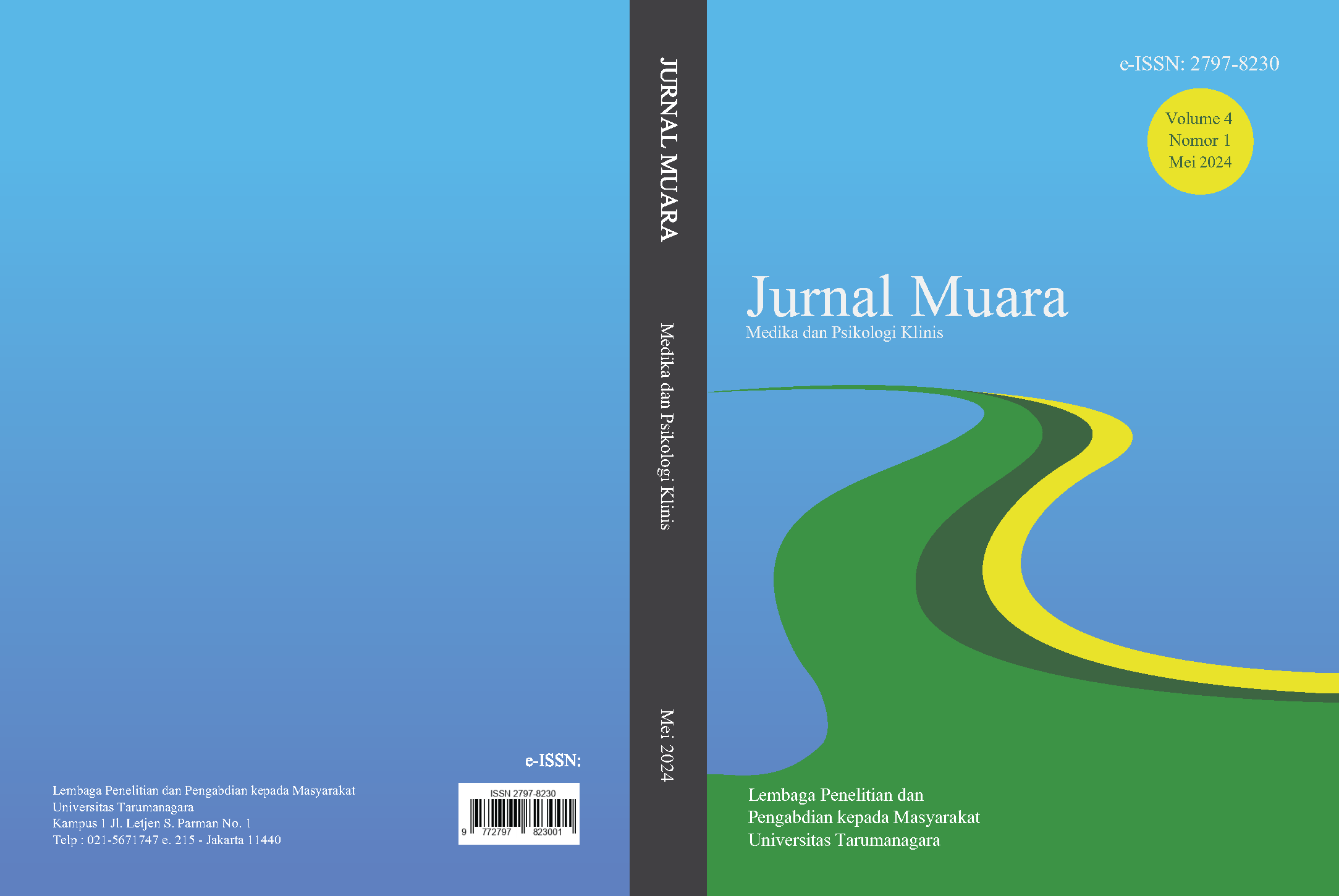CORRELATION OF ANTHROPOMETRY AND BODY COMPOSITION IN WOMEN WITH AGE
Main Article Content
Abstract
Background: Ageing has been associated with molecular and physiological changes, which lead to a change in body composition, a reduction in lean mass, an increase in fat mass, and a reduction in basal metabolic rate. These further increase vulnerability to obesity, metabolic disorders, and their complications, particularly in women.
Objectives: This study investigates the relationship between anthropometric parameters and body composition with age in women to identify changes that occur as age increases.
Method: A cross-sectional study by purposive sampling was carried out on 144 women aged 18 years and above. Anthropometric data such as weight, height, and circumferences were measured alongside body composition parameters like total body fat, visceral fat, and skeletal muscle mass. BMR (Basal Metabolic Rate) was determined by the Omron Karada Scan HBF 375, while its correlations were studied using Pearson's correlation.
Results: There were significant correlations of age with major body composition parameters with aging. There was an increase in total body fat (r = 0.249, p = 0.003) and a decrease in skeletal muscle mass (r = -0.206, p = 0.013), contributing to a decline in BMR (r = -0.231, p = 0.005). Calf circumference was also significantly negatively correlated with age: r = -0.201, p = 0.015.
Conclusion: The most significant influences of aging are on body composition and BMR due to increased fat mass and reduced skeletal muscle reduction that lower metabolic activity. This condition increases the risk of metabolic disorders, regular body composition, and health education monitoring.
Article Details

This work is licensed under a Creative Commons Attribution-NonCommercial-ShareAlike 4.0 International License.
This work is licensed under a Jurnal Muara Ilmu Ekonomi dan Bisnis Creative Commons Attribution-ShareAlike 4.0 International License.References
Bjorntorp, P. (1997). Hormonal control of regional fat distribution. Human Reproduction, 12(suppl 1), 21–25. https://doi.org/10.1093/humrep/12.suppl_1.21
Bredella, M. A. (2017). Sex Differences in Body Composition (pp. 9–27). https://doi.org/10.1007/978-3-319-70178-3_2
Briand, M., Raffin, J., Gonzalez-Bautista, E., Ritz, P., Abellan Van Kan, G., Pillard, F., Faruch-Bilfeld, M., Guyonnet, S., Dray, C., Vellas, B., de Souto Barreto, P., & Rolland, Y. (2024). Body composition and aging: cross-sectional results from the INSPIRE study in people 20 to 93 years old. GeroScience. https://doi.org/10.1007/s11357-024-01245-6
Brown, L. M., & Clegg, D. J. (2010). Central effects of estradiol in the regulation of food intake, body weight, and adiposity. The Journal of Steroid Biochemistry and Molecular Biology, 122(1–3), 65–73. https://doi.org/10.1016/j.jsbmb.2009.12.005
Burt Solorzano, C. M., & McCartney, C. R. (2010). Obesity and the pubertal transition in girls and boys. REPRODUCTION, 140(3), 399–410. https://doi.org/10.1530/REP-10-0119
Chen, K. Y. (2021). Predicting Body Composition From Anthropometrics. Journal of Diabetes Science and Technology, 15(6), 1344–1345. https://doi.org/10.1177/1932296820976584
Crandall, D. L., Busler, D. E., Novak, T. J., Weber, R. V., & Kral, J. G. (1998). Identification of Estrogen Receptor β RNA in Human Breast and Abdominal Subcutaneous Adipose Tissue. Biochemical and Biophysical Research Communications, 248(3), 523–526. https://doi.org/10.1006/bbrc.1998.8997
Deatsman, S., Vasilopoulos, T., & Rhoton-Vlasak, A. (2016). Age and Fertility: A Study on Patient Awareness. JBRA Assisted Reproduction, 20(3), 99–106. https://doi.org/10.5935/1518-0557.20160024
Haapanen, M. J., Mikkola, T. M., Jylhävä, J., Wasenius, N. S., Kajantie, E., Eriksson, J. G., & von Bonsdorff, M. B. (2024). Lifestyle-related factors in late midlife as predictors of frailty from late midlife into old age: a longitudinal birth cohort study. Age and Ageing, 53(4). https://doi.org/10.1093/ageing/afae066
Kiss, C. M., Bertschi, D., Beerli, N., Berres, M., Kressig, R. W., & Fischer, A. M. (2024). Calf circumference as a surrogate indicator for detecting low muscle mass in hospitalized geriatric patients. Aging Clinical and Experimental Research, 36(1), 25. https://doi.org/10.1007/s40520-024-02694-x
Krotkiewski, M., Björntorp, P., Sjöström, L., & Smith, U. (1983). Impact of obesity on metabolism in men and women. Importance of regional adipose tissue distribution. Journal of Clinical Investigation, 72(3), 1150–1162. https://doi.org/10.1172/JCI111040
Liu, J., Fox, C. S., Hickson, D. A., May, W. D., Hairston, K. G., Carr, J. J., & Taylor, H. A. (2010). Impact of Abdominal Visceral and Subcutaneous Adipose Tissue on Cardiometabolic Risk Factors: The Jackson Heart Study. The Journal of Clinical Endocrinology & Metabolism, 95(12), 5419–5426. https://doi.org/10.1210/jc.2010-1378
López-Otín, C., Blasco, M. A., Partridge, L., Serrano, M., & Kroemer, G. (2023). Hallmarks of aging: An expanding universe. Cell, 186(2), 243–278. https://doi.org/10.1016/j.cell.2022.11.001
Piers, L. S., Soares, M. J., McCormack, L. M., & O’Dea, K. (1998). Is there evidence for an age-related reduction in metabolic rate? Journal of Applied Physiology, 85(6), 2196–2204. https://doi.org/10.1152/jappl.1998.85.6.2196
Poehlman, E. T. (1995). Article RETRACTED: Changes in Energy Balance and Body Composition at Menopause: A Controlled Longitudinal Study. Annals of Internal Medicine, 123(9), 673. https://doi.org/10.7326/0003-4819-123-9-199511010-00005
Pontzer, H., Yamada, Y., Sagayama, H., Ainslie, P. N., Andersen, L. F., Anderson, L. J., Arab, L., Baddou, I., Bedu-Addo, K., Blaak, E. E., Blanc, S., Bonomi, A. G., Bouten, C. V. C., Bovet, P., Buchowski, M. S., Butte, N. F., Camps, S. G., Close, G. L., Cooper, J. A., … Speakman, J. R. (2021). Daily energy expenditure through the human life course. Science, 373(6556), 808–812. https://doi.org/10.1126/science.abe5017
Santoso, A. H., Setiawan, F. V., Wijaya, B. A., & Destra, E. (2024). Pengukuran Komposisi Tubuh dalam Upaya Deteksi Obesitas pada Laki-laki dan Perempuan Usia Produktif di SMA Kalam Kudus II, Kelurahan Duri Kosambi, Jakarta. KREATIF: Jurnal Pengabdian Masyarakat Nusantara, 4(2), 78–86. https://doi.org/10.55606/kreatif.v4i2.3359
Soares, M. J., Piers, L. S., Shetty, P. S., Jackson, A. A., & Waterlow, J. C. (1994). Whole Body Protein Turnover in Chronically Undernourished Individuals. Clinical Science, 86(4), 441–446. https://doi.org/10.1042/cs0860441
Soares, M. J., & Shetty, P. S. (1991). Basal metabolic rates and metabolic economy in chronic undernutrition. European Journal of Clinical Nutrition, 45(7), 363–373. http://www.ncbi.nlm.nih.gov/pubmed/1935863
Sowers, M., Zheng, H., Tomey, K., Karvonen-Gutierrez, C., Jannausch, M., Li, X., Yosef, M., & Symons, J. (2007). Changes in Body Composition in Women over Six Years at Midlife: Ovarian and Chronological Aging. The Journal of Clinical Endocrinology & Metabolism, 92(3), 895–901. https://doi.org/10.1210/jc.2006-1393
Trikudanathan, S., Pedley, A., Massaro, J. M., Hoffmann, U., Seely, E. W., Murabito, J. M., & Fox, C. S. (2013). Association of Female Reproductive Factors with Body Composition: The Framingham Heart Study. The Journal of Clinical Endocrinology & Metabolism, 98(1), 236–244. https://doi.org/10.1210/jc.2012-1785



